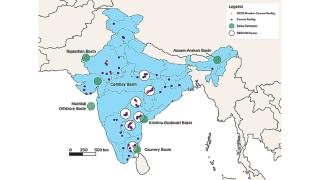With the highest consumption of plastic in the world and representing two-thirds of global cement production, five Asian countries provide the opportunity to address the worldwide issue of non-recyclable plastic waste. By Dr Kåre Helge Karstensen, Palash Kumar Saha, Eirik Vigerust, Anneli Alatalo Paulsen, Dr Christian John Engelsen and Dr Mehdi Ahmadi, SINTEF, Norway.
A total of 6.3bnt of plastic waste was created globally until 2015. Of this, only nine per cent was recycled, 12 per cent incinerated and 79 per cent dumped. If continued, 12bnt of plastic waste will be mismanaged by 2050.1
The Norwegian-funded project Ocean Plastic Turned into an Opportunity in Circular Economy (OPTOCE) is a regional effort to address the main source of microplastics in the ocean, namely inadequate treatment of plastics on land. The project involves India, China, Myanmar, Thailand and Vietnam – countries that include the biggest rivers in the world and a population of almost 3bn people, of which half live near waterways.
